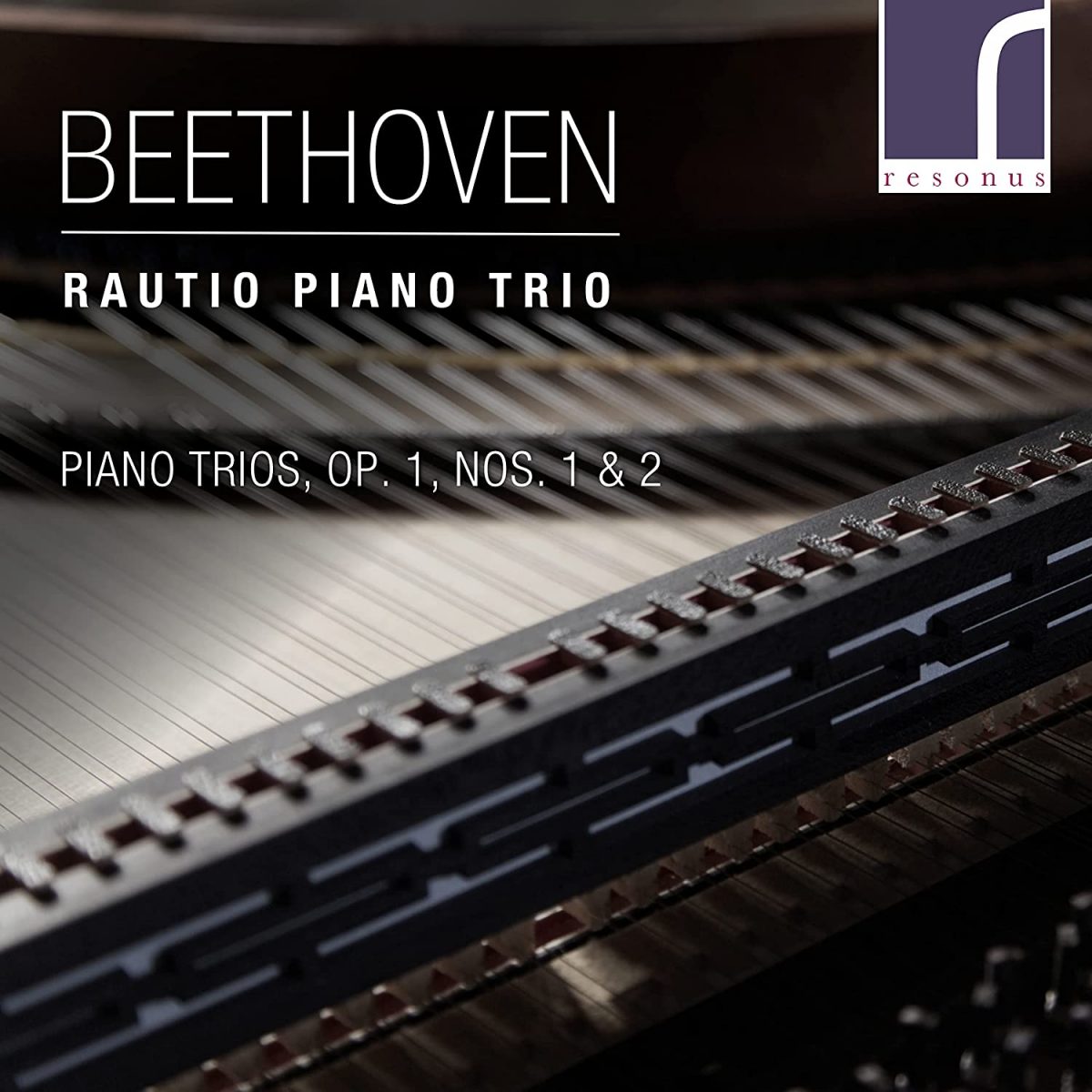Rautio Piano Trio
60:36
resonus RES10305
To my mind, one of the great pleasures of early Beethoven is encountering the future giant as he flexes his muscles, makes his first confident flights of fancy and exercises his ever-increasing power and strength. While admitting there is of course more than a fair share of wisdom after the event about making such an observation, it is nonetheless substantially true. It certainly is, I think, regarding the three Piano Trios of op 1. First given in 1793 at the Viennese home of Beethoven’s patron Prince Lichnowsky, to whom the trios were dedicated, they were revised before publication two years later. Advised by Haydn to make changes, Beethoven not only admitted to his youthful profligacy, observing he had introduced into one work ‘enough music for twenty’, but thanked Haydn for his advice. When the trios were published in 1795, very likely courtesy of a secret subvention by Lichnowsky, they were a great success among the Viennese. It is said they earned him nearly two years’ worth of the salary he had been paid in the post he occupied in Bonn before coming to Vienna.
One of the first things to be noted about the op 1 trios is their ambitious scale. Unlike the three-movement trios of Haydn and Mozart, they are cast in four movements and planned as expansive works, which, if no longer containing enough ideas for twenty, are arresting pieces overflowing with the young composer’s sheer joie de vivre and the unadulterated pleasure of composing. It is these qualities that are so convincingly and compellingly communicated by the period-instrument Rautio Piano Trio (Jane Gordon, violin; Victoria Simonson, cello and Jan Rautio, fortepiano). Both string players play original 17th-century instruments, by G B Rogeri and G Granico respectively, while Rautio’s is based by Paul McNulty on an 1805 Viennese fortepiano built by the Walters. It’s an exceptionally fine-sounding instrument, with an appealingly silvery top and a richly endowed bass capable of powerful chords when necessary. To hear how well and beguilingly the instruments can interact, try the lovely Adagio cantabile (ii) of the Trio in E flat (No 1), where the violin’s song-like melody is joined in dialogue by the cello and then delightful filigree work by the piano, all beautifully balanced. Throughout tempi are well judged, with the players not misled in the ‘slow’ movement of the G-major Trio by the Largo con expressione marking, achieving just the right flow for the movement. And for sheer exuberance go the Finale of the same Trio, with its headlong chasse-like impetus disrupted only by what sounds like a bucolic dance. Technically the playing is of a high order, with Rautio himself, as one might expect in these works, stealing the thunder, his splendid articulation and clean finger-work being a constant pleasure. Just occasionally I thought the violinist’s tone a little thin, though this may be the recording, which in all other aspects is fine. Overall this is an outstanding addition to the catalogue and it is much to be hoped that the Rautios will complete the set with the C-minor Trio.
Brian Robins
